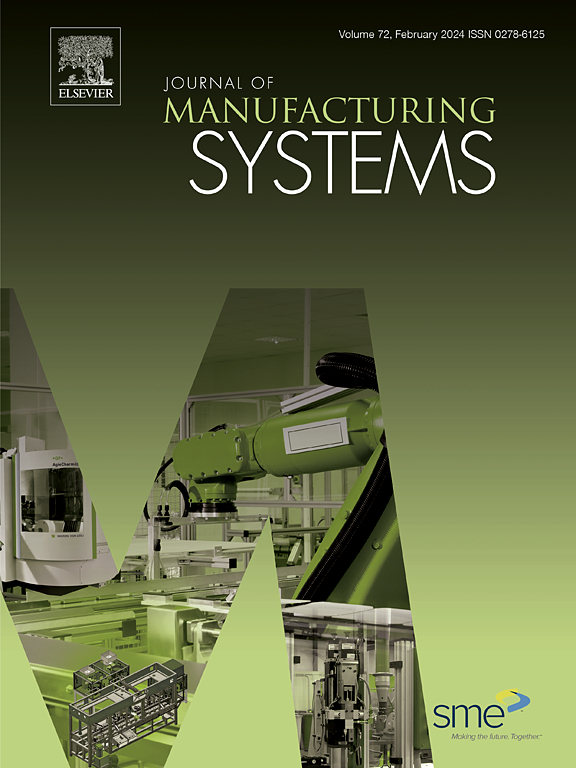A novel dynamic spatio-temporal graph based condition monitoring framework for consistency retention of digital twin
IF 12.2
1区 工程技术
Q1 ENGINEERING, INDUSTRIAL
引用次数: 0
Abstract
A responsive consistency retention strategy is crucial for the engineering application of digital twin (DT). The condition monitoring technique based on graph theory can provide an overall reliability assessment and thus guide DT model updating. However, most existing studies constructed graph topology merely based on data information without incorporating prior engineering knowledge, which restricts the performance of such approaches. To tackle this limitation, a novel graph construction paradigm based on the mechanism of performance degradation and fault propagation is developed in this study. On this basis, unsupervised learning is further combined to form a dynamic spatio-temporal graph based condition monitoring framework for DT consistency retention. Specifically, the spatial dependencies of multi-sensors are quantified based on the evolution of the fault-related frequency band, and then multidomain features are assigned to each graph node. After that, the spatio-temporal graph set is fed to a dual-decoder graph autoencoder to extract the essential features of normal conditions, where a domain adaptation module is introduced to eliminate environmental effects. Hypothesis testing is conducted at last to inspect the machine state over time and make the final decision. Validation and comprehensive comparison experiments were carried out on two engineering scenarios with different scales (component and system level). The Numenta Anomaly Benchmark (NAB) was employed to evaluate the effectiveness of the proposed approach and the results revealed the great potential of the proposed framework for DT consistency retention.
基于动态时空图的数字孪生一致性保持状态监测框架
响应式一致性保持策略对于数字孪生(DT)的工程应用至关重要。基于图论的状态监测技术可以提供全面的可靠性评估,从而指导DT模型的更新。然而,大多数现有研究仅基于数据信息构建图拓扑,而没有结合先前的工程知识,这限制了此类方法的性能。为了解决这一问题,本研究提出了一种基于性能退化和故障传播机制的新型图构建范式。在此基础上,进一步结合无监督学习,形成基于动态时空图的DT一致性保持状态监测框架。具体而言,基于故障相关频带的演化,量化多传感器的空间依赖关系,然后为每个图节点分配多域特征。然后,将时空图集送入双解码器图自编码器提取正常条件的基本特征,并引入域自适应模块消除环境影响。最后进行假设检验,检验机器随时间的状态,做出最终决策。在两个不同规模(组件级和系统级)的工程场景下进行了验证和综合对比实验。采用Numenta异常基准(NAB)来评估所提出方法的有效性,结果显示了所提出框架在DT一致性保持方面的巨大潜力。
本文章由计算机程序翻译,如有差异,请以英文原文为准。
求助全文
约1分钟内获得全文
求助全文
来源期刊

Journal of Manufacturing Systems
工程技术-工程:工业
CiteScore
23.30
自引率
13.20%
发文量
216
审稿时长
25 days
期刊介绍:
The Journal of Manufacturing Systems is dedicated to showcasing cutting-edge fundamental and applied research in manufacturing at the systems level. Encompassing products, equipment, people, information, control, and support functions, manufacturing systems play a pivotal role in the economical and competitive development, production, delivery, and total lifecycle of products, meeting market and societal needs.
With a commitment to publishing archival scholarly literature, the journal strives to advance the state of the art in manufacturing systems and foster innovation in crafting efficient, robust, and sustainable manufacturing systems. The focus extends from equipment-level considerations to the broader scope of the extended enterprise. The Journal welcomes research addressing challenges across various scales, including nano, micro, and macro-scale manufacturing, and spanning diverse sectors such as aerospace, automotive, energy, and medical device manufacturing.
 求助内容:
求助内容: 应助结果提醒方式:
应助结果提醒方式:


